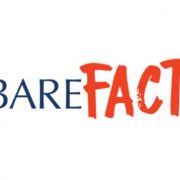BARE Shares – Improve staff experience to boost customer satisfaction
Customer service is an integral part of running a successful business. Companies who successfully implement a customer experience strategy achieve higher customer satisfaction rates, reduced customer churn and increased revenues. Furthermore, research by American Express found that 60% of customers are willing to pay more for a better experience.
Where do the employees come into these statistics? Quite simply: without employees, you have no customer experience. So how do you know your employees are delivering the standards expected of them to create loyal customers? Here, BARE International India shares and article by Sujaya Banerjee (CEO of Capstone People Consulting) for Times of India: Improve staff experience to boost customer satisfaction.
‘It is common knowledge that engaged employees can create loyal customers. However, delivering on this cycle seamlessly remains a significant challenge in most organisations. This becomes particularly relevant since companies that excel at customer experience have one and half times more engaged employees, as compared to customer-service organisation laggards.
A growing number of companies is recognising the value of customer-centric strategies that result in higher revenue, lower cost, and increased employee and customer loyalty. However, customer centricity begins at home — there is a clear need to engage the whole organisation, including support functions, to truly enable the culture.
Turning support functions into customer-centric organisations is a powerful lever to sustain and deepen a service culture that permeates through all layers of the organisation. It also promotes a long-term sustained impact by applying the principles of customer-service excellence to employee journeys. These efforts are not easy to achieve or execute as it involves bringing all support staff into a true culture of service. This requires challenging defined objectives, earmarking resources and, most of all, involves the sponsorship of the C-suite to ensure every touchpoint demonstrates customer centricity.
Fundamentally, organisations already know how to improve employee experience. Principles of customer experience and design can easily and proactively be applied to HR practices, rather than limiting organisations to annual employee satisfaction exercises.
For decades now, the focus has been to increase employee engagement by creating action plans against engagement drivers that impact engagement most.
A more proactive way to do this is to attempt to understand employee expectations first, like we do with customers. The focus must be on managing these expectations by creating experiences that deliver on the promise. Unrealistic or improbable expectations must also be neutralised through mature interactions that help set expectations right.
Managing experiences, augmenting employee connect, evoking respect for the employer and the employer brand, enhancing active contributions — increasing the quality of service to customers and loyalty to the organisation — all these are natural outcomes. Therefore, enhanced employee experience leads to employee engagement and loyalty as depicted here: Expectation > Experience > Engagement. Here’s what we traditionally do: Measure engagement > Identify key drivers > Develop action plans around key drivers > Hope for higher engagement.
Applying a customer-experience strategy to employee experience begins with need-based segmentations, grouping employees into clusters based on their wants/needs. Most organisations create standard groupings based on rank, department, business unit or geography. Just as customer experience design requires nuanced understanding of customers rather than only demographic or economic value, employee experience design should be based on their drivers/desires — which are in fact their expectations.
It is well known that staff don’t want the same employer value propositions (EVPs) in the form of opportunities for development, rewards or roles. However, when principles of customer relationship management (CRM) are applied to engage the workforce of one, the results can be magical.’
‘The best customer experiences brings the companies distinctive brand values and attributes to life and the same is true for employee experiences. Companies must design them to align with employee priorities and differentiate their brands. This way employees experience the brand values firsthand and are better equipped to reinforce them and interpret them with the customers. Managing employees’ experience with discipline can help cultivate a distinctive culture that acts as a talent magnet. Customer experience excellence when linked back to manage employee experience with the same rigour, enable the virtuous cycle of excellence, where customer centricity feeds into distinctively positive experiences at both ends.
Finally, managing employee engagement through employee experience interventions can permeate to foster an environment where employees feel motivated to satisfy customers and evoke loyalty for their organisations.’
Quality Assurance & Brand Audits from BARE International
Covert or Announced Audits.
Your company spends a big chunk of the budget on promotions and pricing strategies. Are you monitoring them to make sure they are being executed correctly? Audits can be executed covertly without your staff being aware that the audit is taking place, or as an in-depth announced audit. Discover if your desired brand image is being represented the way you envisioned or evaluate your employees to improve training and reward top performers.
Audits can cover:
- cash integrity
- facilities
- standards
- pricing
- loss prevention
BARE’s customer experience research can provide you with critical data to make meaningful business decisions. Request a quote and receive a complimentary consultation of your business here today.












Leave a Reply
Want to join the discussion?Feel free to contribute!